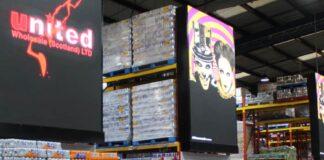3. Promote your promotions: Shout but don’t be intrusive.
One of the biggest challenges in running a successful promotion is communicating correctly. “You need to make sure that everyone is on board – all departments need to be aligned to ensure it works, from buying and sales to marketing and management,” says Dhamecha’s Naren Chotai.
There’s a fine line between increasing visibility and bombarding customers with too much information. Nicola Oldroyd, catering manager at The Star Inn hotel in Harome, Yorkshire, gets as many as 30 emails a week from wholesalers pushing deals. But reliability and quality are more important: “We tend not to be swayed by promotions at all,” she says.
While some caterers get too much information, others are not getting enough, according to Rekha Cumberlidge at Midlands Catering in Sutton Coldfield, who uses a mixture of Booker and Costco.
“We like to know in advance what’s on promotion but at some depots, you have to ask to find out,” she says. She receives regular promotional emails and brochures through the post, adding: “I prefer emails to post or phone calls because it’s ‘greener’ and phone calls can be intrusive.”
One way to capitalise on customers visiting your business is to hold sampling events, which are a useful way to highlight deals by getting customers to try before they buy. JJ Food Service recently held a sampling event at its Enfield branch during National Chip Week to highlight its deals on chipping and potato products.
“Not only did the event help us to engage with customers at branch level, it also sparked a lot of interest and discussion via social media,” says general manager Terry Larkin.











GETTING A GOOD DEAL OUT OF GOOD DEALS: THE ART OF PROMOTION MANAGEMENT
The impact of price promotions on sales has become ever more important to the extent that they often play a dominant role in profit generation and really drive consumer behaviour – which is exactly what they are designed to do, of course. However, the way promotions pump up sales volumes and have an impact on the sales of other lines puts great stress on the supply chain, especially on the forecasting and replenishment of fresh goods.
The challenge lies in incorporating promotion forecasting and replenishment into the supply chain planning processes; this can typically be overcome by following seven best practice tips.
1. Manage campaign information and forecast variables in the forecasting system;
2. Include logistical information such as required presentation levels as well as preferred delivery dates for initial quantities including stock for presentation purposes;
3. Let the system calculate the promotion forecast for consumer sales as well as the order forecast;
4. Review the forecasts and compare with previous campaigns - and modify them, if needed;
5. Collaborate with suppliers to ensure capacity and availability for fulfilment;
6. Execute to plan and demand;
7. Review success based on key metrics including operative supply chain KPIs and commercial KPIs
Best practice suggests that by incorporating highly granular data into a new breed of supply chain management technology, new insights can be achieved which ultimately help drive better planned and executed promotions that maximise sales without negatively affecting sales of other product lines or profit margins.
The more important promotions are for sales, the more important it is to include them in the forecasting and replenishment processes. Better promotion forecasting leads to better planned promotions using better data, which helps forecast subsequent campaigns more accurately.